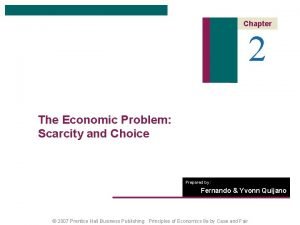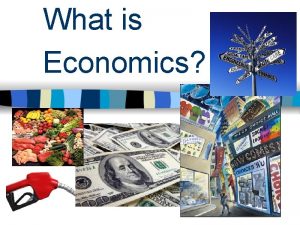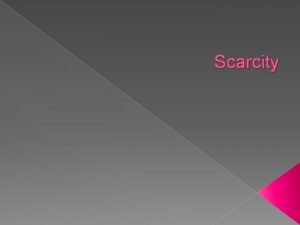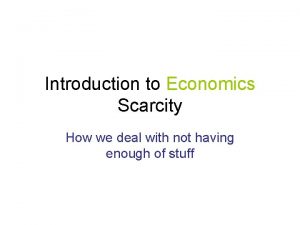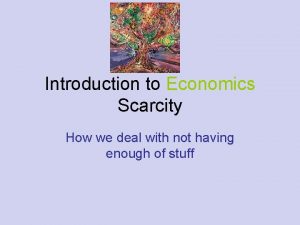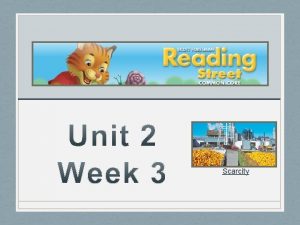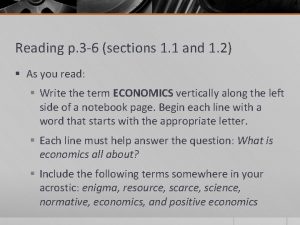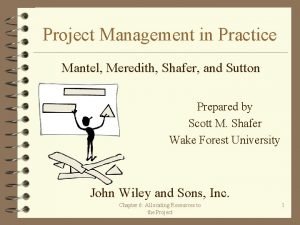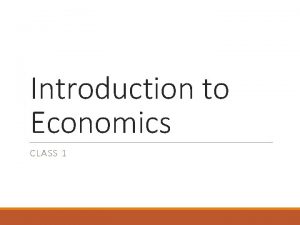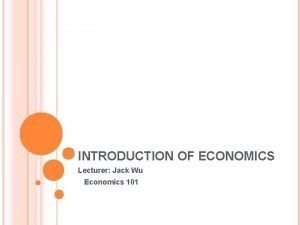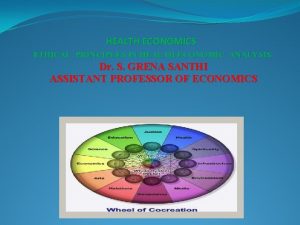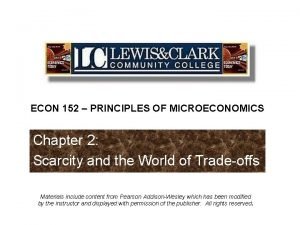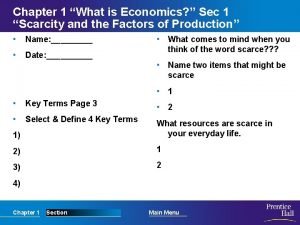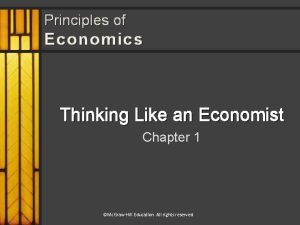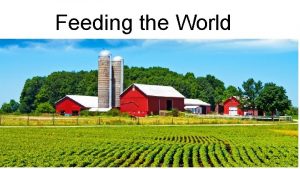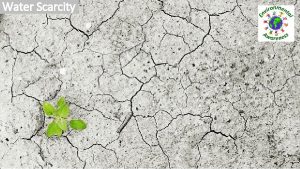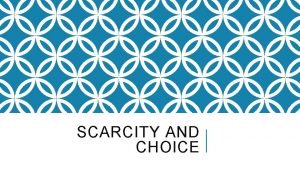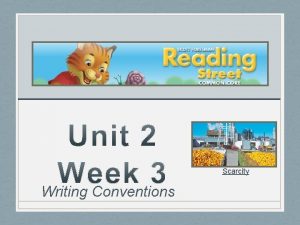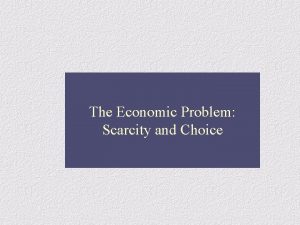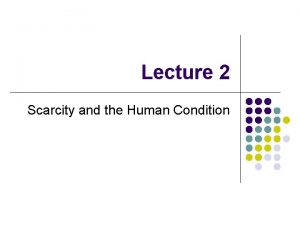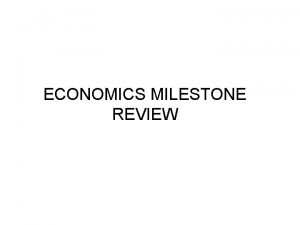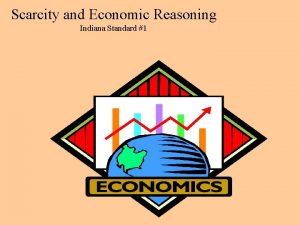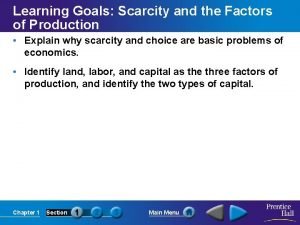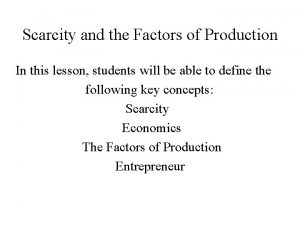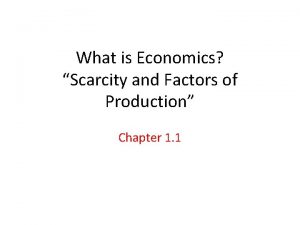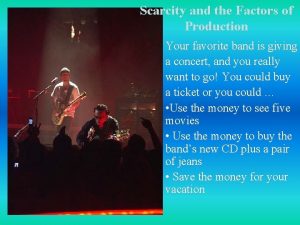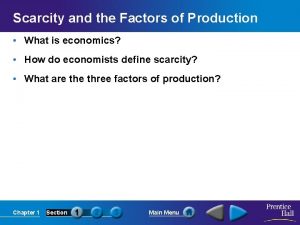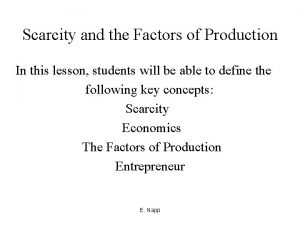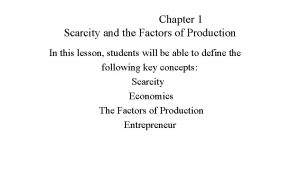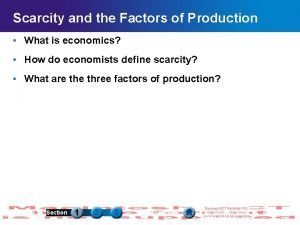Scarcity and the Factors of Production What is

























- Slides: 25

Scarcity and the Factors of Production • What is economics? • How do economists define scarcity? • What are three factors of production? *

1. 1 a Introduction Economics: What is it? • The word economics comes from the Ancient Greek oiko-nomos which means house management. • How do we manage a house? We make decisions about what to do with what we have. To do this well, we try to use as little of what we have to get the things we want. We might also call this resource management. *

What Is Economics? 1. Needs and Wants – People cannot have everything they need or want. (Economics begins with theses) a. Need – Air, food, or shelter (Something for survival) b. Want – An item we desire but is not needed for survival 2. Economics is the study of how people make choices to satisfy their wants and mainly their needs best. For example: a. You must choose how to spend your time b. Businesses must choose how many people to hire*

Resources and Production • To make things we need and want, other things have to be sacrificed. This is a simple observation of opportunity cost. • Opportunity Cost can be simply defined as what we give up to get something else. • Resources might be described as potential opportunity costs, things we might give up to get something else. *

Trade-offs and Opportunity Cost • Trade-offs are all the alternatives that we give up whenever we choose one course of action over others. • Individuals and Trade-offs – Every decision you make involves trade-offs. You need to decide in life what is important to your personal needs and accept that something may have to be scarified for it. (Marriage or Cars are examples) • Businesses and Trade-offs – Companies face similar problems deciding what is necessary to keep their business running, giving up something they see as less important. (Employment levels) • Society and Trade-offs – A countries trade-offs are more complicated. Is it better to build up your army or feed you people? The decisions here can avoid wars or cause riots in the streets. • The most desirable alternative given up as a result of a decision is known as opportunity cost. • When you decide how much more or less to do, you are thinking at the margin. *

Scarcity and Shortages 3. Goods and Services (All goods and services are scarce) a. Goods – Physical objects such as shoes, shirts, or i-pods b. Services – Actions or activities that one person performs for one another (Haircuts or dental checkups for instance) 4. Scarcity occurs when there are limited quantities of resources to meet unlimited needs or desires. 5. Shortages occur when producers will not or cannot offer goods or services at current prices. 6. Therefore scarcity always exists because needs and wants always out stretch the resource supply. 7. Goods and services are scarce because they are all made from resources that are scarce. *

Factors of Production • Once we decide to use a resource to make something else, it becomes a Factor of Production, usually categorized in one of four groups: Land, Labor, Capital, and Entrepreneurship. *

The Factors of Production 1. Factors of Production – resources that are used to make all goods or services. 2. Land All natural resources that are used to produce goods and services. (Farms, coal, water, forests) 3. Labor Any effort a person devotes to a task for which that person is paid. 4. Capital Any human-made resource that is used to create other goods and services. a. Physical Capital – Human-made object used to create other goods and services. b. Human Capital – The knowledge and skills a worker gains through education and experience. c. An economy requires both to produce goods and services*

Entrepreneurs 5. Entrepreneur – Are ambitious leaders who decide how to combine land, labor, and capital resources to create new goods and services. a. Bill Gates of Microsoft or Henry Ford for example b. Someone who opens a small business then builds it to a chain of stores. c. These are the people that take the risks to develop original ideas to fuel economic growth. *

1. 1 b Key Economic Questions In every society, however large or small, there are three key economic questions that must be answered: • What should we make? • How should we make it? • Who will get what we make? Historically, there have been three ways to answer these questions— • By tradition • By authority • With the market * (Next: Key economic Questions)

The Three Economic Questions 1. Every society must answer three questions: a. What goods and services should be produced? 1) Societies need to decide what to produce to satisfy needs and wants. How many resources need to be used on defense, education, public health, consumer goods. Remembering resources are limited. b. How should these goods and services be produced? 2) This question can be the most important. The countries of the world need to balance their resources carefully so they are not all used up on a few needs and wants. Successful countries use their resources in many areas to keep their people satisfied. c. Who consumes these goods and services? 3) Once the items are produced a society must determine who receives these items. Example might be during times of war the army may get more goods than the regular population. *

Economic Goals 2. Societies answer the three economic questions based on their values. Economic Goals Economic efficiency Economic freedom Economic security and predictability Economic equity Economic growth and innovation Other goals Making the most of resources Freedom from government intervention in the production and distribution of goods and services Assurance that goods and services will be available, payments will be made on time, and a safety net will protect individuals in times of economic disaster Fair distribution of wealth Innovation leads to economic growth, and economic growth leads to a higher standard of living. Societies pursue additional goals, such as environmental protection.

Four Economic Systems 3. An economic system is the method used by a society to produce and distribute goods and services. a. Traditional economies rely on habit, custom, or ritual to decide what to produce, how to produce it, and to whom to distribute it. c. In a market economy economic decisions are made by individuals and are based on exchange, or trade. b. In a centrally planned economy (authoritarian) the central government makes all decisions about the production and consumption of goods and services. d. Mixed economies are systems that combine tradition and the free market with limited government intervention. *

Answering the Key Economic Questions In a traditional economy, economic questions are probably never asked explicitly. People simply do what has always been done. – – What will we make? Same things we made last year. How will we make them? Same way we made them before. • In an authoritarian economy, economic questions are left to the leaders, and people make things they are told to make. This kind of economy is also referred to as Central Planning. • In either of the above, economy by tradition or authority, it is relatively easy to understand the methods for answering the economic questions. • On the other hand, a market economy is comparatively difficult to understand. If we don’t depend on tradition or authority to answer the economic questions, how do we decide what to make, how to make it, and who gets what? *

1. 1 c Production Possibilities • Production Possibilities Curves can help us understand how markets answer the economic question, “What will we make? ” • Consider a stock of resources that will allow us to make either watermelons or shoes—*

Production Possibilities 1. A production possibilities graph shows alternative ways that an economy can use its resources. 2. The production possibilities frontier is the line that shows the maximum possible output for that economy. Production Possibilities Graph 25 0 15 8 14 14 12 18 9 20 5 21 0 Shoes (millions of pairs) Watermelons Shoes (millions of tons) (millions of pairs) 20 15 10 5 0 a (0, 15) b (8, 14) c (14, 12) d (18, 9) A production possibilities frontier e (20, 5) f (21, 0) 5 10 15 20 25 Watermelons (millions of tons)

Production Possibilities • Here the Production Possibilities Frontier is shown with the curved line A-B-C-D. It shows the maximum production possible—the combinations of watermelons and shoes that are possible if we use all our available resources. Because of Implicit Costs we usually choose to produce inside the frontier. • All societies have to make choices, somehow decide how to use their resources. How much of our land, labor and tools should we use to grow watermelons for instance, and how much to make shoes? *(Stop)

• During a time of famine we may not want as many shoes at all, because every factory worker can add to our farm production, feeding one more person. • Most of the time, though, we like shoes enough that we use our most specialized resources—the factories and the factory workers—to make shoes. *

• Moving from A to B on the Production Possibilities Frontier, we don’t lose many shoes but get lots of watermelons because farm workers and farmers are lots better at growing watermelons than making shoes. • Moving to point C, with all our specialized watermelon resources already being used, we must give up lots of shoes to get more watermelons like at point D. • In other words, the more watermelons we produce, the greater the opportunity cost. This is because our resources are specialized. *

Efficiency Production Possibilities Graph 25 Shoes (millions of pairs) • Efficiency - means using resources in such a way as to maximize the production of goods and services. An economy producing output levels on the production possibilities frontier is operating efficiently. * 20 S 15 a (0, 15) 10 b (8, 14) c (14, 12) g (5, 8) 5 d (18, 9) e (20, 5) A point of underutilization 0 5 10 f (21, 0) 15 20 Watermelons (millions of tons) 25

Growth Production Possibilities Graph 25 Future production Possibilities frontier T Shoes (millions of pairs) • Growth - If more resources become available, or if technology improves, an economy can increase its level of output and grow. When this happens, the entire production possibilities curve “shifts to the right. ”* 20 S 15 a (0, 15) b (8, 14) c (14, 12) 10 d (18, 9) 5 e (20, 5) f (21, 0) 0 5 10 15 20 Watermelons (millions of tons) 25

Cost • Cost - A production possibilities graph shows the cost of producing more of one item. To move from point c to point d on this graph has a cost of 3 million pairs of shoes. * Production Possibilities Graph 25 0 15 8 14 14 12 18 9 20 5 21 0 Shoes (millions of pairs) Watermelons Shoes (millions of tons) (millions of pairs) 20 15 c (14, 12) d (18, 9) 10 5 10 15 20 25 Watermelons (millions of tons)

1. 1 d Economic Growth • When we find new resources—or learn to use them better—we are able to produce more. • This is called economic growth. *

1. For any society, the ability to create more from the resources available will seem like a good thing. 2. How to create economic growth is a substantial problem for policy makers, but economists generally agree that investment is an important component. 3. Another important observation is that growth does not necessarily bring development, which is a measure of how well-off people are. 4. The potential for more production and income are there with growth, but development requires that things like medical care, education, and a clean environment are made available to society. * (Last slide next)

• We will return to discuss economic growth when we get to Macroeconomics, the study of how a whole economy works—all the markets inside a particular country. • Alternatively, Microeconomics is the study of particular markets and how they work— the world’s oil market or the potato market in a small country. *
 Jelaskan proses pembuatan multimedia content production
Jelaskan proses pembuatan multimedia content production Shortages occur when
Shortages occur when Chapter 2 the economic problem: scarcity and choice
Chapter 2 the economic problem: scarcity and choice Scarcity, choice and opportunity cost example
Scarcity, choice and opportunity cost example Take home pay
Take home pay Economics
Economics Definition of scarcity in economics
Definition of scarcity in economics Scarcity lesson plan
Scarcity lesson plan Def of scarcity
Def of scarcity Causes of scarcity
Causes of scarcity Scarcity sentence
Scarcity sentence Scarcity forces tradeoffs
Scarcity forces tradeoffs Entrepreneurship 3209
Entrepreneurship 3209 Resources scarcity
Resources scarcity Resources scarcity
Resources scarcity Resources scarcity
Resources scarcity Resources scarcity
Resources scarcity Resources scarcity
Resources scarcity Resources scarcity
Resources scarcity Scarcity
Scarcity Economic systems cartoon
Economic systems cartoon Chapter 1 section 1: scarcity guns or butter answer key
Chapter 1 section 1: scarcity guns or butter answer key Theory definition
Theory definition Scarcity principle
Scarcity principle Picture of scarcity
Picture of scarcity Market
Market


